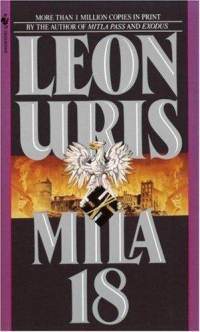TL;DR
Mila 18 by Leon Uris is a gripping historical fiction novel that portrays the valiant struggle of the Jewish residents of Warsaw during the ghetto uprising against Nazi oppression, highlighting themes of courage and resilience in the face of tyranny.
What is Mila 18 about
Set amidst the harrowing Nazi occupation of Poland during World War II, Mila 18 narrates the story of the Warsaw Ghetto uprising, where Jews, armed with homemade weapons, bravely confront the overwhelming force of the Wehrmacht. Leon Uris crafts a narrative steeped in both historical accuracy and dramatic storytelling, capturing the essence of a community’s desperate fight for survival against systematic genocide. The characters, while fictional, embody the real spirit of those who resisted, allowing readers to engage with the emotional and moral complexities of this dark chapter in history.
Mila 18 6 Key Takeaways
The establishment of the Warsaw Ghetto
Mila 18 opens with the Nazi establishment of the Warsaw Ghetto, where Jewish families are forcibly segregated, highlighting the dehumanization and oppressive conditions they face.
Formation of resistance groups
Amidst despair, members of the Jewish community begin to organize resistance groups, determined to fight back against Nazi tyranny, setting the stage for the uprising.
The ghetto uprising begins
As the Nazis launch their final assault on the ghetto, the residents, equipped with improvised weapons, rise up in defiance, showcasing their courage and resolve.
Conflict within the community
Tensions arise as different factions within the Jewish resistance disagree on strategies and objectives, reflecting the complexities of survival and leadership in crisis.
Tragic losses and sacrifices
The uprising leads to devastating losses, illustrating the harsh realities of battle and the unyielding spirit of those who sacrifice everything for freedom.
The aftermath of the uprising
In the wake of the uprising, the remaining survivors are left to grapple with the harsh consequences of their fight, symbolizing both despair and hope.
Top Mila 18 Quotes
- "In the face of insurmountable odds, the spirit of resistance burns brightest."
- "History is not a record of what happened, but a reminder of what can happen if we forget."
Who should read Mila 18?
Mila 18 is ideal for readers interested in historical fiction, especially those drawn to World War II narratives. It offers insights into the resilience and courage of marginalized communities, inspiring reflection on the importance of standing against tyranny and injustice.
Mila 18 Best Reviews
- "A powerful and moving account of a tragic yet heroic struggle for survival, Mila 18 remains a poignant reminder of resilience against tyranny." - The New York Times
- "Leon Uris masterfully blends history and fiction to create a gripping narrative that honors the bravery of the Jewish people during one of history's darkest hours." - Publishers Weekly
People also liked these summaries
Mila 18 FAQs
Is Mila 18 a true story?
While Mila 18 is a work of historical fiction, it is based on real events surrounding the Nazi occupation of Poland and the Warsaw Ghetto uprising.
What themes are explored in Mila 18?
The novel explores themes of resistance, courage, community, and the impact of oppression, as it delves into the complexities of human spirit in the face of adversity.
